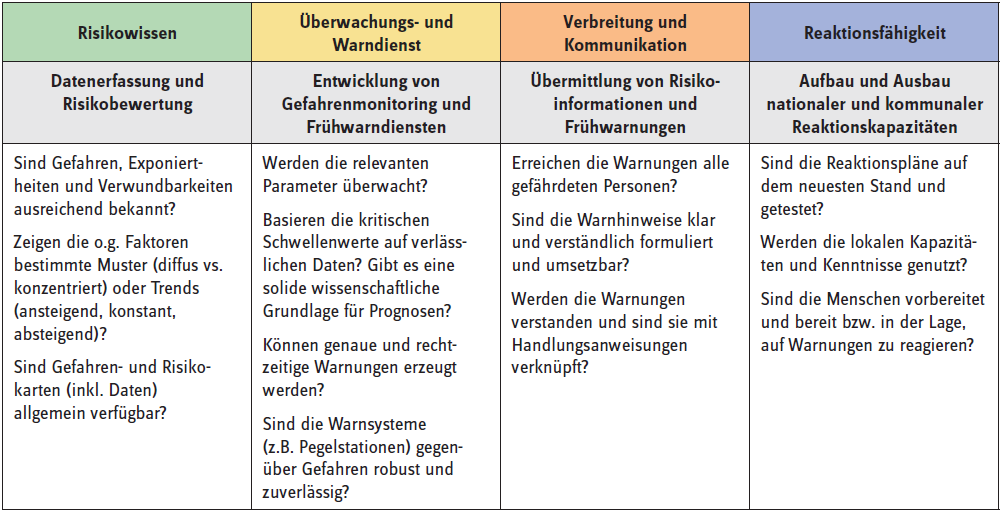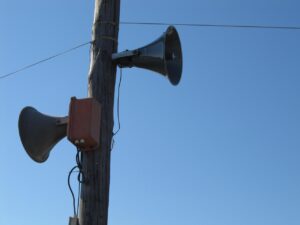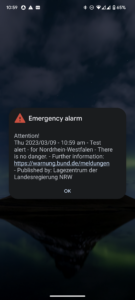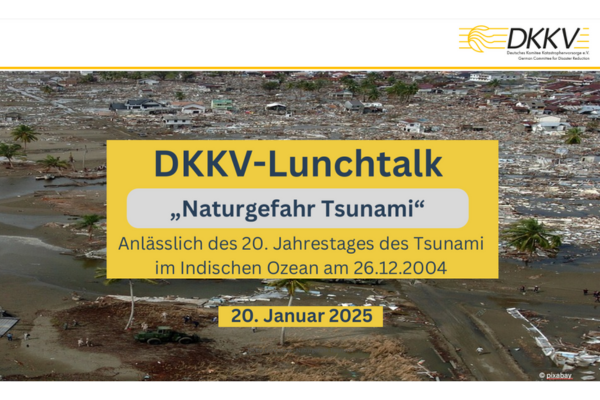Early warning systems
The topics of early warning and early warning systems have gained attention in Germany in recent years. In particular, the nationwide warning day, which has been held annually since 2020, and the flood disaster in 2021 have revealed weaknesses and an urgent need for action in warning and alerting the population. This topic page highlights the key elements of effective early warning systems, challenges and progress in Germany.
© Pixabay
What are early warning Systems?
Early warning systems serve to warn people in good time of damaging events and give them the opportunity to react appropriately. They are a central component of risk management. Effective early warning systems are based on four elements (supplemented according to UNDRR, 2004, 2006): Hazard assessment and data analysis, hazard monitoring, effective warning communication and measures to strengthen response capabilities together form a comprehensive risk management system, which is shown in detail in the diagram below.
This makes it clear that early warning systems should not only be understood as technical systems, but also as social processes. Success depends largely on how well the population is informed and involved.
In this context, real-time data, both real-time (RT) and near real-time (NRT), are crucial for a rapid and precise response to developing hazards. They can immediately detect changes in the hazard situation and thus enable forecasts to be made. They support the monitoring of hazards such as earthquakes and tsunamis (GFZ), volcanism (ESKP), flash floods, tornadoes (IFRC) and industrial hazards, as well as the timely communication of warnings to ensure an effective and timely response by the affected population.
Four basic elements of early warning systems and the associated key issues (Thiebes et al. 2022)

Lessons from international experience – the example of Indonesia
The 2004 tsunami in Southeast Asia clearly demonstrated the consequences of a lack of early warning systems. In response, the German Indonesian Tsunami Early Warning System (GITEWS) was developed. It combined state-of-the-art technologies with social preparation.
A key finding: even the fastest warning is useless if the “last mile” is not bridged. The population must be warned in good time, trained and prepared for concrete action. This principle of turning the “last mile” into the “first mile” is regarded as a model for effective warning systems worldwide.
More about the 2004 tsunami in the Lunchtalk with Dr. Alexander Rudloff from the GFZ.
More information can also be found on the tsunami page.
Alerting systems in Germany
Germany relies on different alerting methods, as each one has its own strengths and weaknesses. A coordinated “warning mix” is therefore crucial in order to reach the widest possible population and ensure an effective warning.
Loudspeaker announcements

© Pixabay
Direct and situation-specific, but limited range and high resource requirements.
Warning apps

© BBK
Apps such as NINA, KATWARN or the DWD’s WarnWetter app offer differentiated warnings. However, these only reach smartphone users who have to deliberately install the apps and require a functioning mobile network. Around 12 million people currently have the NINA warning app installed.
Sirens

©Pixabay
Traditional means, which was increasingly dismantled after the end of the Cold War but is now being used more frequently again. National development programmes to improve the siren network have been increasing again since the flood disaster in the Ahr valley in 2021. Modern sirens can now also transmit announcements.
Cell Broadcasting

© Privat
A technology introduced in Germany in 2021 that sends messages to all cell phones in a danger zone, regardless of apps. This method is considered data protection-friendly and robust (“last service standing”), but requires technical adjustments to the devices. The advantage, on the other hand, is that users do not need to install any apps to receive the alerts.
Challenges and solutions
Challenges and the way forward
1. Technical challenges
Expansion and modernization of the siren infrastructure.
2. Promoting risk communication
Educational initiatives to raise awareness of warning signals
Training and exercises to improve response capabilities
3. Clarification of responsibilities
Stronger cooperation between state and municipal authorities.
Key messages
1. Early warning systems are more than just technology
Communication and social acceptance are key.
2. A coordinated warning mix is essential
Redundant systems increase the range and effectiveness.
3. Education and information strengthen the ability to act
Only informed and prepared people can react appropriately to warnings
More
Network for early warning systems
Background
In 2013, the Global Initiative for Disaster Risk Management (GIKRM) was launched as part of an interministerial cooperation between the Federal Ministry for Economic Cooperation and Development (BMZ), the Federal Foreign Office (AA), the Federal Ministry for Economic Affairs and Climate Protection (BMWK) and the Federal Ministry of the Interior and Homeland (BMI). Implementation was entrusted to the Gesellschaft für Inter-nationale Zusammenarbeit (GIZ). The aim was to use the specific departmental functions and competencies for more effective international disaster management.
Early warning systems network:
In the first phase, an expert network for early warning systems was established through workshops. The network has been managed by DKKV since 2019. Requests for consulting services and expertise on the topics of early warning and early warning systems can be forwarded to the network via the DKKV office.
Further links and materials
Created: March 2025
Current Information
No Results Found
The page you requested could not be found. Try refining your search, or use the navigation above to locate the post.



